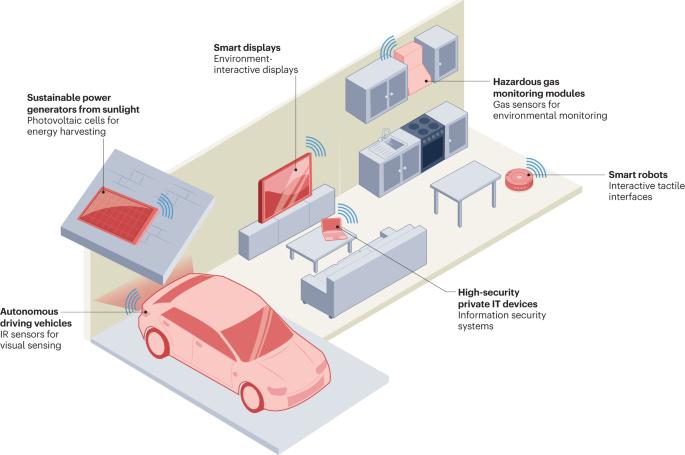Intelligent block copolymer self-assembly towards IoT hardware components
引用次数: 0
Abstract
The Internet of Things (IoT) has emerged as the principal element for hyperconnectivity in the era of the fourth industrial revolution, in which low-power and self-sustainable operation, miniaturization and communication are the main requirements for advanced systems. Highly functional nanoscale structures, together with fabrication processes on the sub-100-nm scale, can be useful for the development of versatile miniaturized IoT devices. In this Perspective, we introduce block copolymer (BCP) self-assembly as a tool for the fabrication of high-performance IoT hardware components. Tailored material design of BCPs in terms of chemical diversity and molecular architectures enables the dense integration of physical and chemical functionalities below the tens of nanometres scale. BCPs can be used as nanoscale templates for surface nanopatterning, as soft 3D nanoporous structures or as nanopatterned substrates for spatially selective chemical functionalities. We summarize advances in technological areas relevant to the IoT, such as sensing, energy harvesting, user interfaces and information security systems. We also consider the limitations and open challenges that must be addressed, and we outline future research directions towards the use of BCP assembly for the next generation of IoT systems. Block copolymer self-assembly provides sub-10-nm periodic nanopatterned structures to fabricate Internet of Things (IoT) hardware components with a cost-effective, large-area approach. This Perspective focuses on how nanostructuring can improve the performance and introduce versatile functionalities to IoT components.

面向物联网硬件组件的智能嵌段共聚物自组装
在第四次工业革命时代,物联网(IoT)已成为实现超级互联的主要因素,在这一时代,低功耗和自持续运行、微型化和通信是先进系统的主要要求。高功能纳米级结构以及 100 纳米以下的制造工艺有助于开发多功能小型化物联网设备。在本《视角》中,我们将介绍嵌段共聚物(BCP)自组装作为制造高性能物联网硬件组件的工具。从化学多样性和分子结构的角度对 BCP 进行量身定制的材料设计,可以在几十纳米尺度以下密集集成物理和化学功能。BCPs 可用作表面纳米图案化的纳米级模板、软性三维纳米多孔结构或用于空间选择性化学功能的纳米图案化基底。我们总结了与物联网相关的技术领域的进展,如传感、能量采集、用户界面和信息安全系统。我们还考虑了必须解决的局限性和公开挑战,并概述了将 BCP 组装用于下一代物联网系统的未来研究方向。嵌段共聚物自组装可提供 10 纳米以下的周期性纳米图案结构,以经济高效的大面积方法制造物联网(IoT)硬件组件。本视角重点关注纳米结构如何提高物联网组件的性能并为其引入多种功能。
本文章由计算机程序翻译,如有差异,请以英文原文为准。
求助全文
约1分钟内获得全文
求助全文

 求助内容:
求助内容: 应助结果提醒方式:
应助结果提醒方式:


